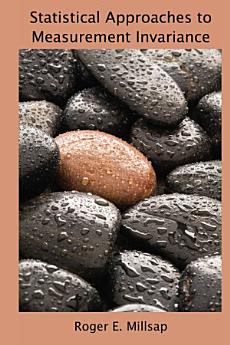Statistical Approaches to Measurement Invariance
About this ebook
The book begins with an introduction to the general topic, followed by a review of the measurement models used in psychometric theory. Emphasis is placed on latent variable models, with introductions to classical test theory, factor analysis, and item response theory, and the controversies associated with each, being provided. Measurement invariance and bias in the context of multiple populations is defined in chapter 3 followed by chapter 4 that describes the common factor model for continuous measures in multiple populations and its use in the investigation of factorial invariance. Identification problems in confirmatory factor analysis are examined along with estimation and fit evaluation and an example using WAIS-R data. The factor analysis model for discrete measures in multiple populations with an emphasis on the specification, identification, estimation, and fit evaluation issues is addressed in the next chapter. An MMPI item data example is provided. Chapter 6 reviews both dichotomous and polytomous item response scales emphasizing estimation methods and model fit evaluation. The use of models in item response theory in evaluating invariance across multiple populations is then described, including an example that uses data from a large-scale achievement test. Chapter 8 examines item bias evaluation methods that use observed scores to match individuals and provides an example that applies item response theory to data introduced earlier in the book. The book concludes with the implications of measurement bias for the use of tests in prediction in educational or employment settings.
A valuable supplement for advanced courses on psychometrics, testing, measurement, assessment, latent variable modeling, and/or quantitative methods taught in departments of psychology and education, researchers faced with considering bias in measurement will also value this book.
About the author
Roger E. Millsap is a Professor in the Department of Psychology and a faculty member in the Doctoral Program in Quantitative Psychology at Arizona State University. He received his Ph.D. in Psychology in 1983 from the University of California-Berkeley. Dr. Millsap’s research interests include psychometrics, latent variable models, and multivariate statistics. He has published more than 60 papers in professional journals and co-edited the Sage Handbook of Quantitative Methods in Psychology with Alberto Maydeu-Olivares in 2009. Dr. Millsap is a Past-President of the Psychometric Society, of Division 5 of the American Psychological Association, and of the Society of Multivariate Experimental Psychology. He is a Past –Editor of Multivariate Behavioral Research and is the current Executive Editor of Psychometrika.





